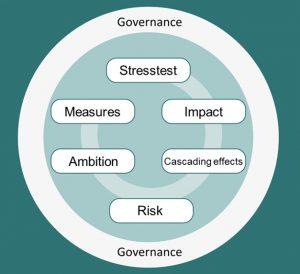Building Urban Resilience to Network Disruptions
The interdependence of utilities in an urban environment makes it complex to quantify the risks and take effective measures to make the city more resilient. During a masterclass organised by the Coalition for Disaster Resilient Infrastructure (CDRI) and in cooperation with Resilient Cities Network, Deltares experts interactively guided 80 participants through the process of performing a resilience assessment. This knowledge helps governments to adapt to climate change rape against water-related events.

Quantifying risks from disrupted transport networks is a challenging task in an urban environment. Reasons for this are the interdependence of different utilities (telecom, ICT, electricity, gas, transport, sewage and health) and the fact that when part of a city's transport network fails, many people are often affected. Due to the complexity, it is often unclear where to start when trying to build resilience for one's urban system. During the master class, the participants took decisions that a municipality or a utility company would normally take, for example answering questions such as: Which hazard is your city most affected by e.g. floods, earthquakes? What would be the main consequence of a failing transport infrastructure? What metric would you use to quantify the impact? Based on the participants' answers, possible results of a resilience assessment were shown for a real-life case.

Resilience assessment
This assessment is based on a framework which was developed during a joint research project in the Netherlands, that explains what steps need to be taken during a resilience assessment for municipalities or utility owners to keep their critical infrastructures safe and resilient under current and future conditions. Central to this framework is a risk-based approach starting with the identification of the hazards during stress tests, quantifying its impact and potential cascading effects as well as the prioritization of hotspots for risk. The final step of the framework involves proposing measures that can be implemented to achieve the desired level of ambition, with its potential co-benefits. In a resilience assessment the desired level of resilience is crucial to evaluate the measures.

Application
The previously mentioned resilience assessment framework has been applied during a case study in Broward County where the cascading effects of road disruption were incorporated in an economic risk analysis. Data about the different dependencies was collected during a CIRCLE workshop to understand the key consequences of cascading failures. For each of the key consequences, including hospital inaccessibility and business isolation, was determined how many people were affected and what the additional economic costs are. People could be affected by isolation or by being disconnected from their destination, due to road outages. For this assessment, we used the network criticality part of the RA2CE toolset. Network criticality can help to quantify the societal costs related to cascading effects. Subsequently, locations could be prioritized that potentially experience high damages or are affected by large societal losses.

